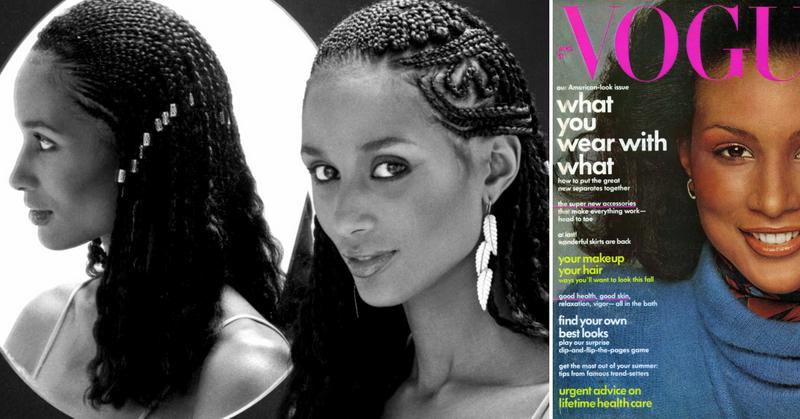Young Beverly Johnson, First Black 'Vogue' Cover Model, Then And Now
By | May 16, 2019

In 1974, future supermodel Beverly Johnson became Vogue's first black cover model -- something she'd been explicitly told would never happen. If Johnson's cover feat seems late, it was -- media desegregation and "firsts" had been happening for decades. Hattie McDaniel became the first black actress to win an Oscar for Gone With The Wind in 1940, and Ethel Waters became the first black actress to star in a sitcom in 1950 as the title character in Beulah. Fashion, though, remained stubbornly homogeneous. Today, Johnson is considered the catalyst that led to an explosion of black fashion models in the years and decades that followed, as both an inspiring example and a mentor. "Without Beverly Johnson," wrote Huffington Post's fashion editor, "there would be no Iman, Naomi Campbell or Tyra Banks."
Early Years And Success With 'Glamour'

As a youth, the rangy beauty from Buffalo, New York swam competitively and aspired to practice law. At Northeastern University, where she studied criminal justice, she tried her hand at modeling while on summer break.
Immediately she found consistent work, gracing the cover of Glamour while setting records for the magazine’s circulation. Three short years later, she became the first black woman to earn the cover shot of Vogue. Attaining the cover of Vogue was a monumental accomplishment. Her first agent, fashion powerhouse Eileen Ford, told her bluntly, “It'll never happen.”
Fighting An Uphill Battle

Model Katiti Kironde had become the first black cover girl for Glamour in 1968, and Jane Hoffman had broken the color barrier on the cover of Cosmopolitan in 1969. But Vogue, the largest and most influential of the women's fashion magazines, remained unattainable even into the early 1970s. Amazingly, fashion editors were skeptical that black faces could sell magazines. Johnson described the thinking of the time, “For generations in this country, beauty was traditionally represented by three very distinct ideals in virtually all media: blond hair, blue eyes, and fair skin.”
The Cover That Changed The Game

In the industry, Vogue set the standard and Beverly Johnson set her sights on it. Earning the cover meant the world to all models, “It was the pinnacle, like winning the Super Bowl for the modeling industry,” said Johnson. Her accomplishment can’t be underestimated. Beverly herself called the achievement not only the defining moment of her career but of her life.
Kicking Down The Door

Shortly after Beverly Johnson shattered the glass ceiling, many women of color followed. Johnson detailed what that cover said to other black women, “My cover shattered that notion forever...Women of color could boldly say to the world, ‘Hey, look at me! I’m here and I have value and I am beautiful.”
Further Success

All told Johnson appeared on more than 500 magazine covers, becoming an absolute superstar fashion model. She then parlayed her success in print to television. Johnson made appearances on Law & Order, 3rd Rock From The Sun, and Sabrina, The Teenage Witch. She even showed up on Tyler Perry’s Meet The Browns in 2010.
Johnson Became Bill Cosby's Highest-Profile Accuser

Unfortunately, even for status quo changing models, not everything is sunshine and rainbows. In 2014, Johnson shared a blunt account in Vanity Fair entitled "Bill Cosby Drugged Me. This Is My Story." She maintains that Bill Cosby drugged her and would have sexually assaulted her had she not screamed and yelled until he threw her out. While her account never led to charges, telling her story inspired dozens of other women to come forward with their harrowing accounts.
Mold Breaker

Beverly Johnson changed the world, as did Jackie Robinson and Serena Williams. Prior to her breakout, young black women didn’t have an example they could point to and follow in their path. By shattering the color barrier on the cover of Vogue, Johnson let all women of color know that their dreams were possible. Just a single year after she posed for the cover of Vogue, “Every major American fashion designer began using African-American models.”
Usually, the process of changing the world is gradual, plodding, and slow. However, when it came to Beverly Johnson, she blew up the status quo in a single year. All women, not just of color, owe her a debt of gratitude. She made the impossible possible and did it proudly.
